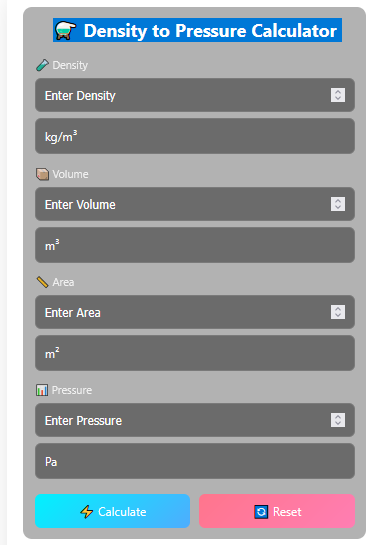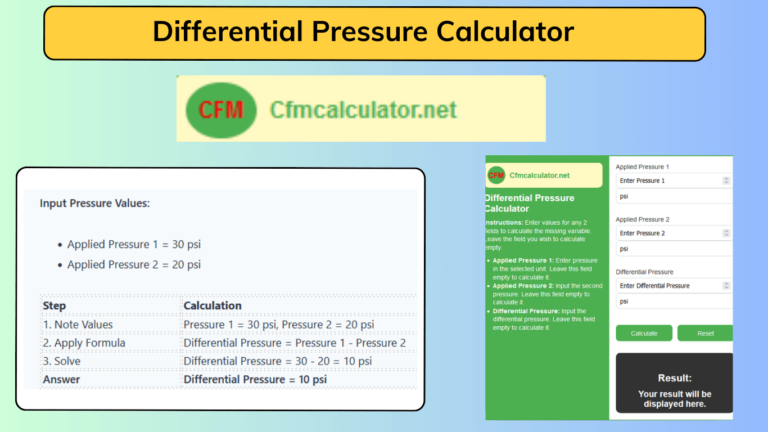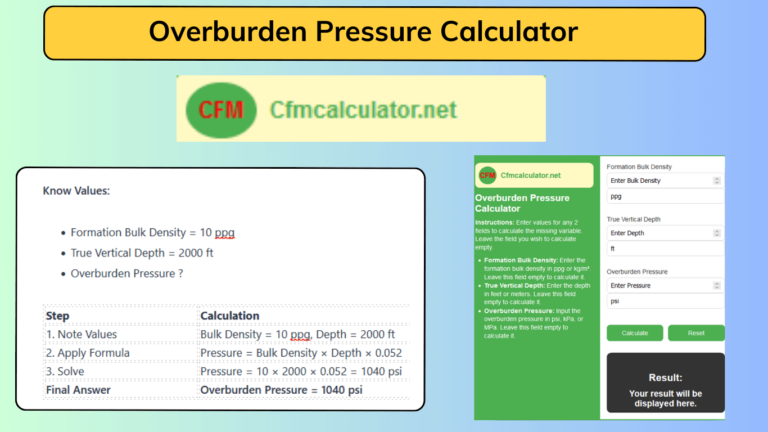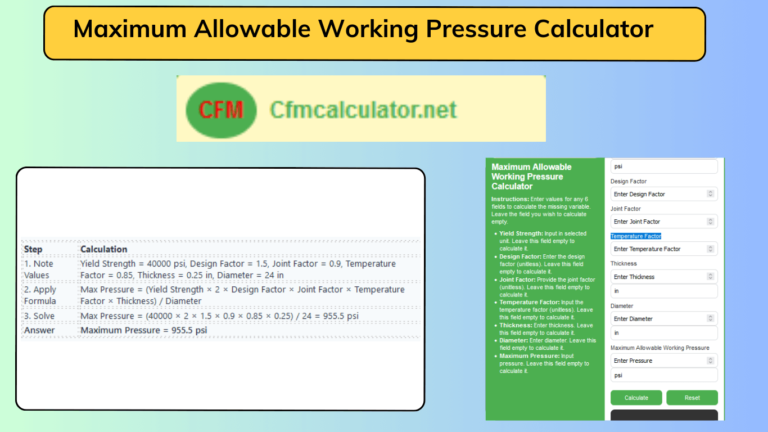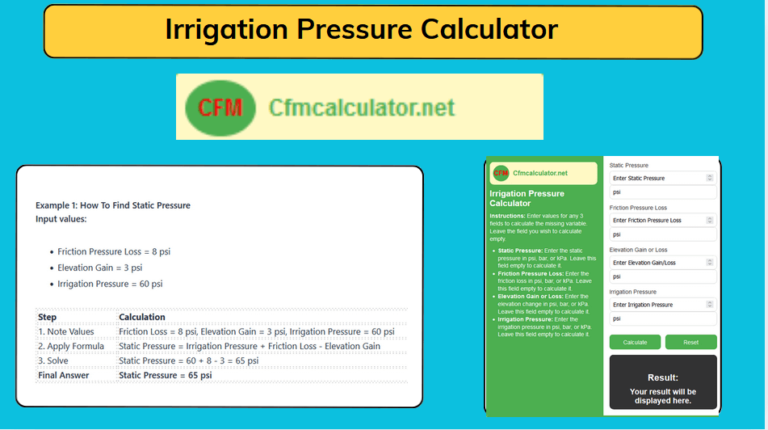Density to Pressure Calculator
Density to pressure shows the relationship between the mass density of a fluid and the pressure it exerts on a surface. This calculator simplifies the process of calculating pressure from density. Enter density, volume and area into the calculator to determine the pressure.
⚗️ Density to Pressure Calculator
Contents
The calculation of density and pressure is important for fluid mechanics, hydraulic systems, and for meteorologists to understand atmospheric pressure and weather patterns.
How To Convert Density to Pressure?
Formula;
Where:
- P = Pressure (Pa, psi, bar, atm)
- ρ (rho) = Density (kg/m³, lb/ft³, g/cm³)
- V = Volume (m³, ft³, liters)
- g = Gravity (9.81 m/s²)
- A = Area (m², ft², sq yd)
Example: For A Industrial Water Storage
A water storage tank in a chemical plant has a volume of 10 m³ and a base area of 5 m². The density of water is 1000 kg/m³. To ensure structural integrity, engineers need to calculate the pressure exerted at the base.
✅ Result: pressure is 19.62 kPa, ensure the tank’s foundation can withstand the load.
Uses of Density to Pressure Conversion
- Hydraulic Systems: Engineers determine fluid pressure for industrial machinery.
- Dams and Reservoirs: Helps engineers estimate water pressure for dam safety.
- Aerospace and Submarine Engineering: Assesses pressure changes at different altitudes and depths.

